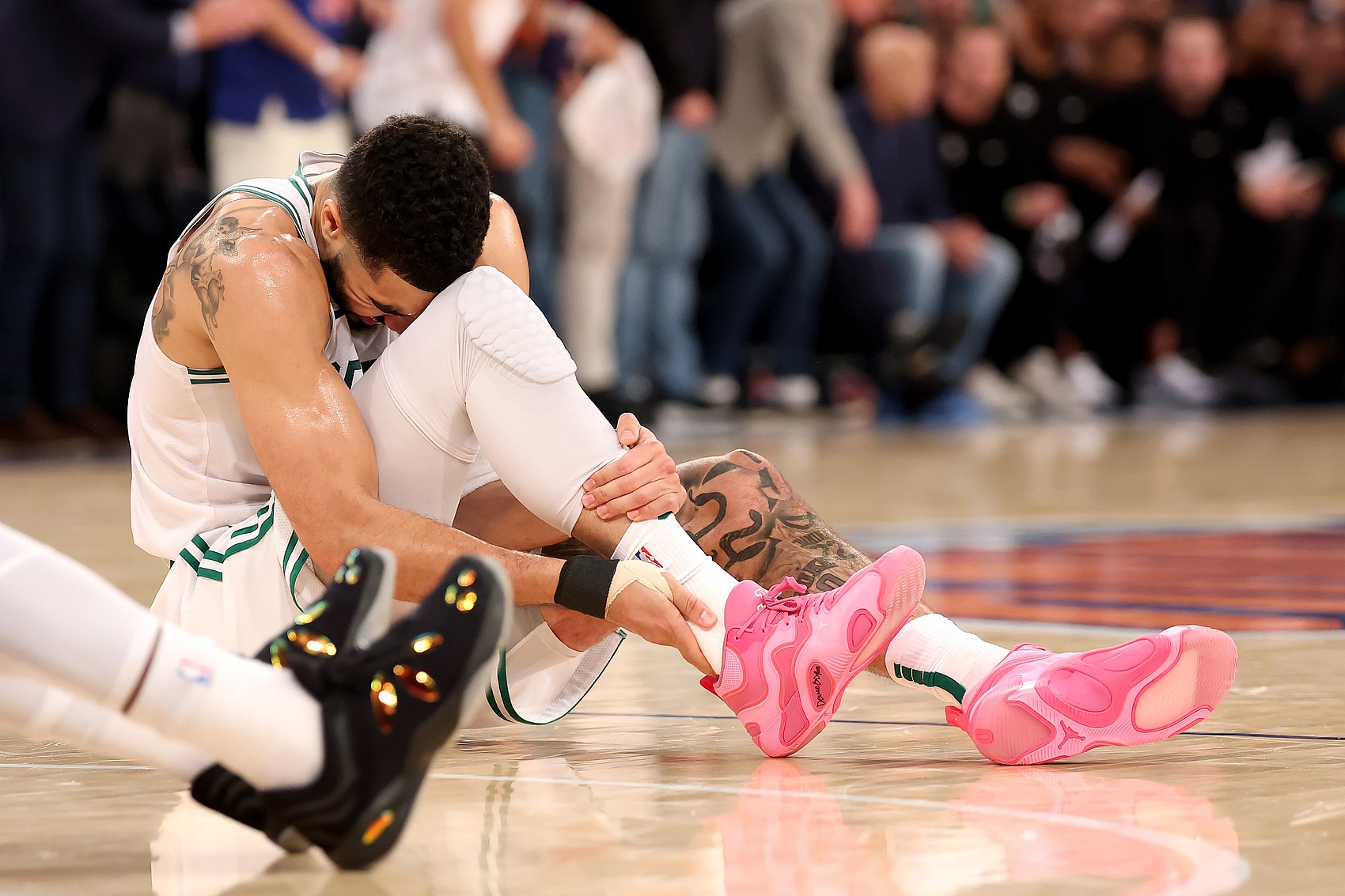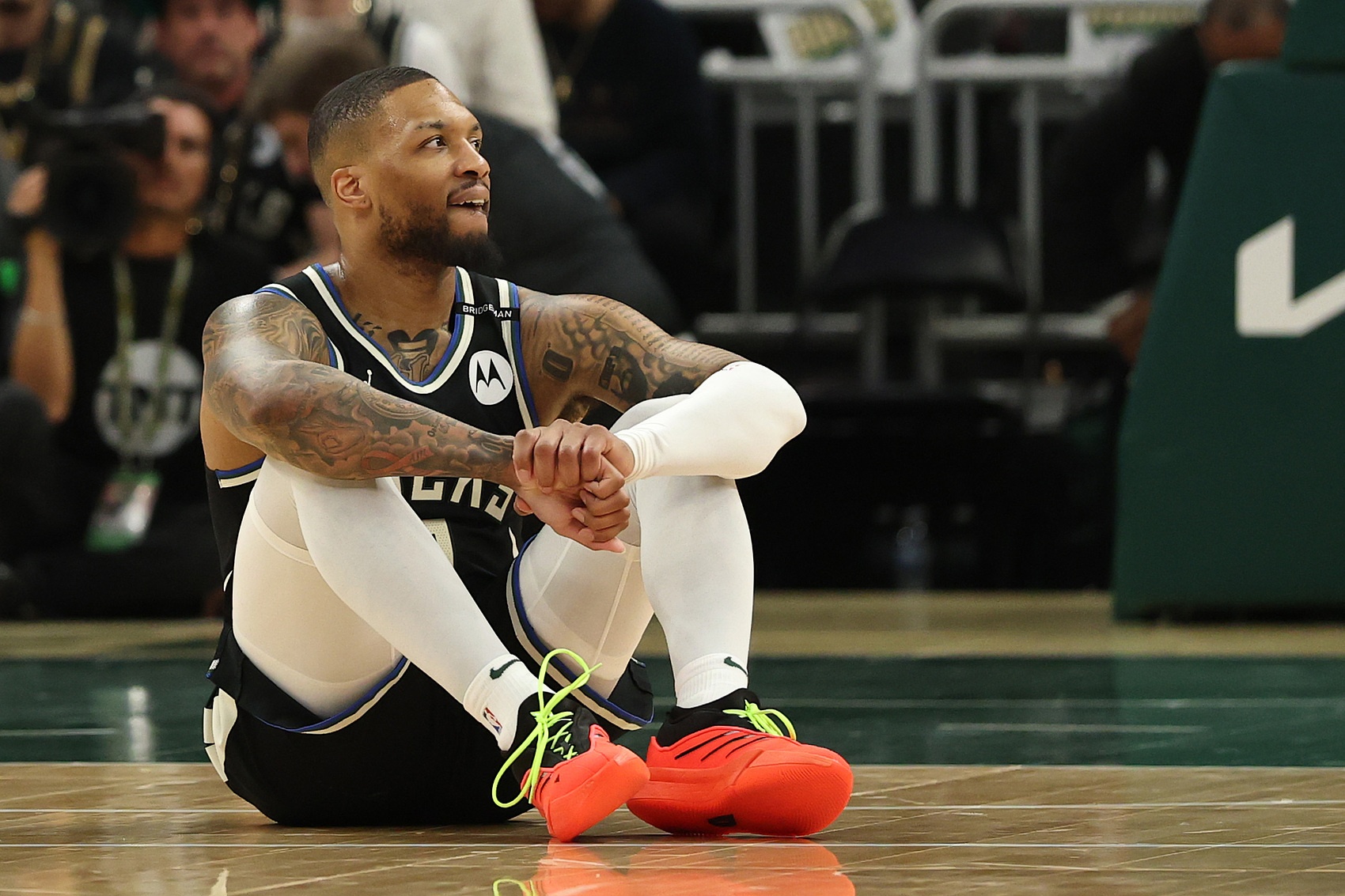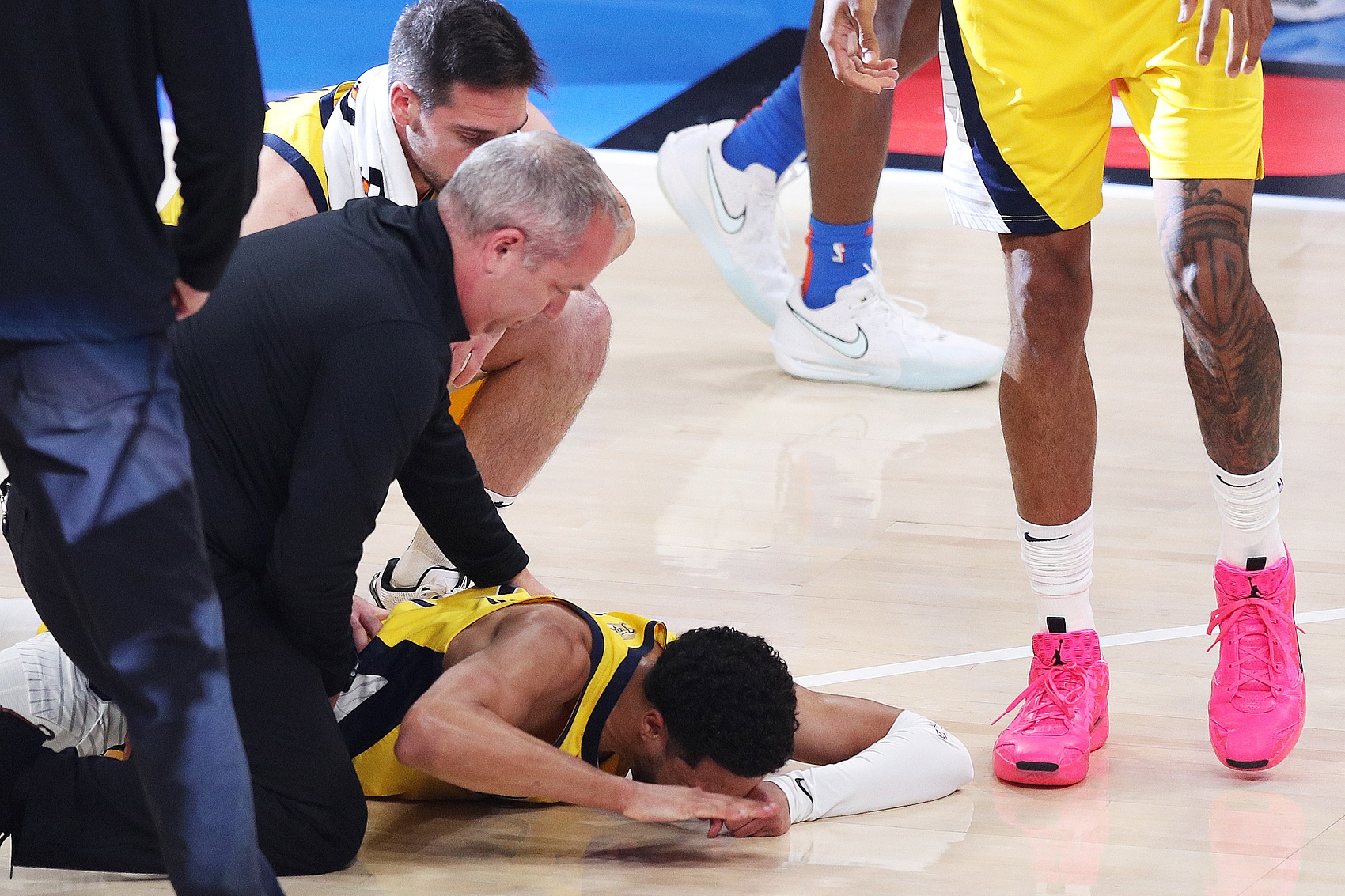NanSports > Basketball > Medical experts: There is no necessary connection between calf strain and Achilles tendon tear. Frequent injuries occur from fighting with injuries
Medical experts: There is no necessary connection between calf strain and Achilles tendon tear. Frequent injuries occur from fighting with injuries

(The original article was published on June 25, and the author is Maria Lawson of ESPN website. The content of the article does not represent the translator's opinion)
Achilles tendon injuries have become common headlines in the professional sports world, and such injuries in the NBA are particularly frequent this season. During the playoffs alone: Bucks guard Lillard suffered a tear of left Achilles tendon in the first round series against the Pacers; Celtics forward Tatum suffered a ruptured right Achilles tendon in the second round against the Knicks; Pacers guard Halliburton suffered a tear of right Achilles tendon in the seventh game of the NBA Finals. Earlier in the season, center Wiseman and Isaiah Jackson also suffered a torn Achilles tendon, and Pelicans defender Dezontae Murray and Heat defender Drew Smith also suffered this fate.
Medical experts believe that these injuries are caused by excessive overdrafts and unexpected situations. Karin Gravare Silbernage, a physical therapist and professor at the University of Delaware, compared the league's current calf injuries to hamstring strains five to 10 years ago, noting that as athletes increasingly value thigh strength training, their calf must have matching strength to operate in a coordinated manner. "Now we need to focus on the calf and Achilles tendon with the same idea," she said. "Can the existing strength support the intensity of the exercise we are engaged in? The development of lower limb strength has lagged behind training in other parts." The ESPN website interviewed four experts on the NBA's Achilles tendon injury this season, exploring in depth why the Achilles tendon is so fragile and whether painkillers can cover up the injury warning signal. The following are the editorial and organized expert opinions:

Q: How easy is the calf part to be injured?
"It's quite easy," said Michael Fredericson, Ph.D., director of the Center for Sports Medicine and Rehabilitation at Stanford University. "Whether walking or running, almost every movement uses the calf muscles. Therefore, if the calf and Achilles tendon injuries are combined, this is the highest type of sports injury."
Dr. Nirav Pandya, professor of orthopedic surgery at the University of California, San Francisco, pointed out that for NBA players, the main cause of injury is excessive overdrawing. "As the season progresses," he analyzed, "the continuous loss caused by high-intensity explosive competitions will lead to a concentrated outbreak of a large number of calf injuries." Dr. Nirav Pandya also added that some injuries are accidental, usually due to the momentary load generated by explosive movements such as breaking through layups exceeding the limit of the body.
Q: Why is the Achilles tendon so fragile?
Unlike most muscles and tendons, the Achilles tendon is always in a state of constant tension. Dr. Justin Greisberg, professor of orthopedics and director of foot and ankle surgery at New York Presbyterian Hospital and Columbia University Medical Center, noted that this special muscle structure, created for explosive force and speed, means it is always in a "tight and stress-bearing state." "The stress on the Achilles tendon may be the most tremendous in the body, reaching several times the weight when walking alone," he explained. "For burly professional athletes who perform high-intensity running and jumping, the load magnitude is even more amazing."
When the Achilles tendon ruptures, the damage is far from a simple tear of muscle tissue. "The impact from the break can seriously affect the muscles that are responsible for exerting force," Dr. Justin Greisberg noted. "The whole muscle can fall into a coma-like state." Dr. Justin Greisberg said that for athletes, minor accidents such as stepping on sweat loss, improper landing posture or stepping on other players' feet can cause Achilles tendon damage.
Q: Will a calf strain induce a tear of the Achilles tendon?
is not always the case. Dr Justin Greisberg noted that many athletes with ruptured Achilles tendon have never experienced ipsilateral leg injuries before, so they often lack early warning signals. Professor
Karin Gravare Silbernage said that the existing research data have not confirmed the relationship between the two, but if there is functional defect in the calf muscles and other parts, the whole leg is more susceptible to other injuries. "There is no necessary relationship between a calf strain and a rupture of the Achilles tendon," she stressed, "but these tissues are interrelated." Dr. Michael Fredericson believes that the key to preventing subsequent injuries to a calf strain is to recover fully. "If these muscles fail to fully recover," he explained, "their muscle strength will continue to weaken and they can no longer bear high-intensity loads."
Q: Will taking painkillers cover up early warning signals?
Although powerful anti-inflammatory drugs such as ibuprofen are widely used in professional sports, Dr. Justin Greisberg believes that painkillers are not the culprit of Achilles tendon injuries. He said that athletes rely on drugs to paralyze and fight with injuries, causing Achilles tendon injuries are not valid in most cases. "The reality is that most cases of Achilles tendon rupture have no symptoms before," he analyzed. "The injury is caught off guard." Dr. Michael Fredericson pointed out that the key is not the drug itself, but whether it affects the athlete's ability to sense body signals. Professor Karin Gravare Silbernage added that if athletes do not feel the severe pain, they may lose their instinctive restraint on sports load. "The hidden danger lies precisely in the lack of pain," she questioned. "When the pain is eliminated by the drug, will these protective inhibitory mechanisms disappear?"

Q: Why are Achilles tendon injuries in NBA players this season?
Dr. Michael Fredericson pointed out that athletes' Achilles tendon injuries are caused by excessive overdraft, which means "evaluating the total load and recovery time the athletes are under", which he believes is the result of the combined effect of injury-based combat and insufficient recovery.. "These athletes are the most physically excellent groups we have ever seen," stressed Dr. Michael Fredericson. "So I don't think this is a problem with physical training." Dr. Justin Greisberg attributes it to the superposition of random probability and objective environment, indicating that athletes are constantly challenging the limits of the human body while constantly improving their competitive level. Dr. Nirav Pandya pointed out that under the dual pressure of a playoff game the next day and Olympic preparation training, athletes' training intensity this year is far more than usual. Star players average 39-40 minutes in the playoffs, far exceeding the load level of 25-30 minutes in the regular season, not to mention that there is still a round break in the regular season. "The clear rule we have is that when the playing time in 5-10 consecutive games increases, the risk of injury will rise simultaneously," explains Dr. Nirav Pandya. He also said that contemporary athletes have accumulated more physical loss than their predecessors because they have started to compete in high intensity since their adolescence. The amount of loss suffered by the calf muscles and ligament tendons of 22-year-old players has far exceeded the level of players of the same age thirty or forty years ago.
Q: How should athletes prevent such injuries?
Dr. Justin Greisberg recommends reducing risks by stretching (especially the hamstrings and calf groups) and wearing sneakers with solid support. He explained that moderate heel height in traditional sneakers can reduce Achilles tendon pressure, while ultra-flat sneakers may increase the risk by "pre-emphasizing the Achilles tendon in a vulnerable state", but such shoes are more likely to cause tendonitis rather than a complete rupture of the Achilles tendon. Professor
Karin Gravare Silbernage emphasizes that calf strength training can enhance tendon strength. Dr. Nirav Pandya reminded players that they must pay attention to physical discomfort signals: "Although surgical techniques have improved, this is still a serious injury that can change their careers." He advised players to remain alert for subtle pain to prevent it from developing into catastrophic injuries.
Q: What lessons can each team learn from this season?
Experts said that in the face of multiple stars suffering from Achilles tendon injuries, each team must re-examine the training system, monitoring mechanism and rest arrangements. Professor Karin Gravare Silbernage believes that prioritizing basic calf intensive training can effectively prevent injuries.
Dr. Nirav Pandya emphasized that excessive overdraft of core players should be avoided during the playoffs: "Although the pressure of winning objectively exists, scientific management during the season must be ensured and the players' bodies are prepared for the offseason." He also pointed out that athletes should report pain and potential injuries truthfully. "This requires the team to fully adjust their player management strategies, not only to ensure that their physical condition meets standards, but also to make players realize that this is not an accidental risk once or twice a year." Dr. Nirav Pandya added that transparent communication mechanism is crucial to avoiding major injuries.
Q: How long does it take for the recovery cycle of Achilles tendon tear? Dr. Justin Greisberg said that even with a top medical team and rehabilitation program, it will take 9-12 months to return to the peak, and any attempt to accelerate the process will increase the risk of re-tearing. He revealed that the next breakthrough point in sports medicine may be to crack the preventive mechanism of the calf muscles falling into a "coma" state after the Achilles tendon rupture.
Original text: Maria Lawson
Compiled by: Li Taibai
Related Posts
That’s confidence! Jokic s first three-pointer hit a pull-up to lead the score! 0 out of 5 previously
Basketballsource: 7n cn...
moreReporter: I m pretty sure this Rockets is the best team for Durant since he left the Warriors.
BasketballThe Rockets defeated the Magic in overtime yesterday. Durant scored 35 points, 5 rebounds and 6 assists. When BR reporter Andy Bailey talked about the adaptation of the Rockets and Durant, he said: I still feel that it is too early to express my opi...
moreReeves: James return will make everyone s game easier. He is an all-around organizer.
BasketballToday, Lakers guard Reeves was interviewed after training. When asked whether the return of teammate James would change the opponent's defensive strategy against him, Reeves said: "I don't know, but I think from the team as a whole, it...
more
Hot Posts
- Players Union Vice Chairman CJ was sent to Washington? Netizen: This is the final destination of corrupt politicians
- Stay 🔥Shams: Zhuang Shen chose to execute the 5 million player option next season!
- The Warriors season events🧐Curry s three-point miracle is no one and 🤯 The plot is ups and downs and never won the Western Conference Finals
- ESPN reporter ridiculed James for "putting some Hennessy on him to cure his illness" 😭The bald female host couldn t laugh or cry
- Celtics official thanks to Cornet: Forever Celtics Champion Thank you for everything you do
- Earl Clark: I think Irving is misunderstood. He likes to do things at his own pace 😎
- Nuggets coach: The Gordon you got to know in the interview is the real him. People like this are hard to find.
- Nurse talks about George: Addressing strength issues to ensure return status and reduce the risk of re-injury
- How many points should I give? Hawks get Pozin& Walker& Kennard loses Nances& Capela
- Team story talks about the starting lineup of the Celtics: Brown & White & Prichard The other two depend on the coach s tactics
Recent Posts
-
Doncic: I have to find a balance between reasonable shots and crazy shots. I have made progress.
-
Achievements in offense and defense! Randall steals Murray, one-stop counterattack takes off and dunks with a glide
-
Where does Giddy go? 🤔 A typical example of betting on the future: Noel becomes a laughing stock, and her cousin s IT basic salary ends
-
Media person: What was good about Yang Hansen in the first 5 minutes was his presence under the basket, but what was bad was his slow movement.
-
The G League averages 10.8 points per game! Magazine: Suns and forward Terry Samuel sign Ex-10 contract
-
Skip: James complains that the Heat is not as deep as the Spurs, but the Spurs depth comes from Duncan s salary cut
-
Ship Record: Collins joins to reduce the burden on Harden, and the latter no longer needs to compete for rebounds with players like Gordon
-
Cuban: We almost got Kobe in 2007! At that time, it was planned to exchange Howard + Terry + draft pick for him
-
Hardaway Little: The Nuggets style attracts me. I can make teammates play more easily
-
Comrades in the same class! Kuminga: I m really happy for Moody, he gave his all